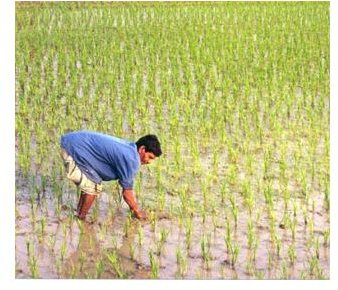Problems with the Green Revolution: Population Growth, Soil Degradation, and More
Backdrop of the Green Revolution
The Green Revolution refers to a worldwide agricultural revolution that took place from plant breeders such as Norman Borlaug. The story goes that Norman Borlaug and a group of research companies developed wheat plant variants that were able to resist disease as well as produce more wheat than standard variants. As a result of this genetic enhancement, countries around the world were able to feed vast populations that otherwise were impossible to feed due to the limitations of plant production as well as limited land.
For example, countries such as India were able to feed vast populations by relying on a genetically engineered rice variant that was able to feed its populations. Mexico was also able to feed its nation and later export wheat by relying on this advancement. Overall, the Green Revolution is praised as saving countless lives due to increased food production, however there are also three significant problems that arose out of the Green Revolution.
First Problem: Consequences of Increasing a Population’s Carrying Capacity
The first argument is whether the Green Revolution has temporarily increased the carrying capacity of a population in a given area. For example, before the Green Revolution, certain areas in the world, such as India, could only carry a certain number of people based on the amount of food given in an area. Due to this concept, the population was kept in check due to the limited amount of food and that area was able to support this population adequately.
Critics argue that the Green Revolution has temporarily increased the carrying capacity of a population thus allowing the population to grow. They argue that when these numbers exceed the growth that an area can sustain, people will die of starvation because there is not enough food to go around. Even though the Green Revolution has provided food for millions of people, it has also created the problem of allowing certain populations to growth which may hurt these populations in the future.
Second Problem: Lack of Biodiversity
The second argument is that the Green Revolution has decreased the “biodiversity” of crops in the world today. For example, before the

revolution, it is speculated that there were over 30,000 different variants of rice that could be planted. Critics estimate that only ten modified rice variants are being used to grow for food. As a result, critics argue that if climate change, disease, or a rise in pestilence attacked the crops, famines may take place which may endanger certain populations.
The reason biodiversity is so important is because if one variant fails to a disease or pestilence, another variant can be used to counterbalance this event. If only a handful of variants are used, they could potentially be eliminated resulting in famines that could wipe out large populations. For example, if a trusted wheat variant has survived various diseases and has stood the test of time, it can be used to replace a variant that is not fairing so well, however if there is no such substitute, nations may risk putting all of their crops in one basket–and this may be disastrous.
Third Problem: Fertilization and Soil Quality

The third problem with the Green Revolution is the issue of fertilization that genetically enhanced plants rely on. For example, let’s say that an enhanced wheat variant is fertilized in order to grow. The fertilizer has the chance to soak into the soil and can spread to other areas if it rains. Due to this indirect pollution, human populations and even ecosystems risk being contaminated by fertilizers that may have harmful side effects on populations or ecosystems.
In addition to this problem, the use of fertilizers has diminished soil quality due to increased reliance on synthetic fertilizers rather than natural fertilizers (such as animal manure) which allowed replenishing of nutrients in the soil. Also, crop rotation has significantly decreased due to the lack of variants of crops that has also decreased soil quality. The reason crop rotation is so important is that by rotating different crops, nutrients could be replaced in the soil due to different crops allowing for increased fertility.
In conclusion, these three problems of the Green Revolution need to be addressed. Even though the Green Revolution has saved countless lives, it still produces problems that are harmful to populations around the world.
References
Sources:
Muir, S. Patricia. “Problems with the Green Revolution.” https://people.oregonstate.edu/~muirp/grevprob.htm
Images:
Mesaytsegaye. “Soil.” https://commons.wikimedia.org/wiki/File:Soil.jpg
Samsara. “Norman Borlaug.” https://commons.wikimedia.org/wiki/File:Norman_Borlaug_crop.jpg
SF007. “Rice Field.” https://commons.wikimedia.org/wiki/File:Rice_Field.jpg
This post is part of the series: All About the Green Revolution
Learn about the history of the Green Revolution as well as various problems that are associated with it.
